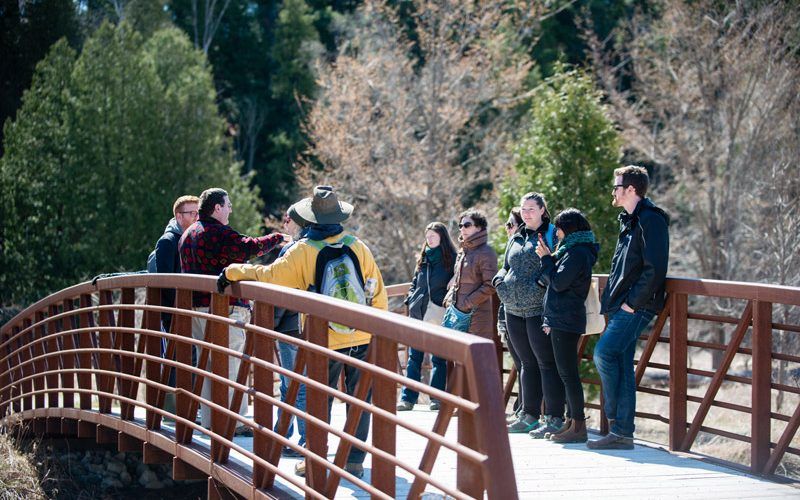- Ontario’s Bill 23 changed the amount of parkland and cash-in-lieu that municipalities receive, triggering concern about achieving municipal parkland goals.
- An inter-municipal working group helped digest the legislation, share information, and devise advocacy strategies.
- While the legislation remained mostly unchanged, the group was able to push back on certain elements and create long-term knowledge-sharing relationships.
What are some of the short and long-term consequences of the changes?
On the short term side, a lot of municipalities are looking at their capital plan and trying to figure out whether they can still afford those things. In the long-term, I would say that communities built post-Bill 23 will have less parkland than pre-Bill 23 communities, so there is likely to be a bit of an inequity over time.
Why was it important to convene with other municipalities to discuss the implications of this bill? What did you hope would result?
It was mostly about knowledge-sharing and helping each other understand how we were anticipating advocating. Whether different municipalities were looking to advocate themselves or whether they were looking to advocate by way of other groups, like professional parks associations. There are now 12 participating municipalities represented by managers or senior park planners. People read things differently, so it was good to see how other people were understanding it and what they had heard from their sources.

Can you explain what Bill 23 is and the way it changes park development in Ontario?
It’s provincial legislation that amends the Planning Act, which governs how parkland is conveyed to municipalities, and the Development Charges Act, which governs how growth-related parkland and park facilities are funded. The bill has reduced the amount of parkland that municipalities will see conveyed, as well as the amount of funding to develop park amenities. It will also impact what types of parkland are acceptable in the future, subject to future regulations, including encumbered land and POPS (privately owned public space).
What do you think the rationale was on the provincial government’s side for making these changes?
I think the province was hearing a lot of consternation from the development industry on different fees that are charged to build housing. There was a lot of advocacy from the housing industry showing how much these fees added to the cost of new housing. And also how certain municipalities were not spending their parkland reserves. I think that those two things together, combined with the provincial government’s desire to provide more housing quickly, is what led to those changes.
What are some of the short and long-term consequences of the changes?
On the short term side, a lot of municipalities are looking at their capital plan and trying to figure out whether they can still afford those things. In the long-term, I would say that communities built post-Bill 23 will have less parkland than pre-Bill 23 communities, so there is likely to be a bit of an inequity over time.
Why was it important to convene with other municipalities to discuss the implications of this bill? What did you hope would result?
It was mostly about knowledge-sharing and helping each other understand how we were anticipating advocating. Whether different municipalities were looking to advocate themselves or whether they were looking to advocate by way of other groups, like professional parks associations. There are now 12 participating municipalities represented by managers or senior park planners. People read things differently, so it was good to see how other people were understanding it and what they had heard from their sources.

What kind of strategies did you use to get your message across?
We were focusing on council briefing notes and advocating messages through the Association of Municipalities in Ontario, Ontario Landscape Association, and the Ontario Professional Planners Institute who seemed to have a bit more of the ear of the government. There wasn’t much of a push to do a public campaign because the deadlines were just so quick.
What was the impact of this advocacy work?
They didn’t make changes to the reduced amount of parkland that municipalities will see conveyed or provided as cash-in-lieu, but they did claw back on developers providing encumbered land or POPS. That is now subject to future regulation, which hopefully will come with criteria such as land within walking distance of the site. And the proposal that developers would be able to suggest lands that are off site to be conveyed–that’s subject to future regulation as well. Those were some pretty good changes.
We also continue to hold monthly virtual forums when participants have questions or issues. Additionally, we email each other with issues that arise where we can learn from each other.
What advice do you have for other municipal practitioners in Canada who may find themselves needing to advocate against provincial changes?
I think what makes progress is when a number of different groups with credibility on a specific matter are on the same message. So figure out the groups that are aligned with your position and then emphasize the same key messages and concerns. If you can get a sense of which groups are being listened to by the provincial government, then you have a chance of your message being heard a little bit louder than if you go it alone. Sometimes you’ll be successful and sometimes you won’t. But every small gain on the things we’re dealing with–the places where people play–is a gain that is useful.
- Building strong intermunicipal working groups can help align actions in specific advocacy moments, but can also create a long-term forum to share knowledge and strategies on other park issues.
- If time allows, a public campaign can help spread awareness of provincial changes by demystifying often opaque legislative changes, situating them as real world impacts in people’s lives, and encouraging residents and community associations to voice their concern with their representatives.
- Building a cross-sectoral coalition of groups, including municipalities and professional organizations as well as aligned community groups and non-profits, can be a more powerful way to get the ear of government than advocating municipality by municipality.

